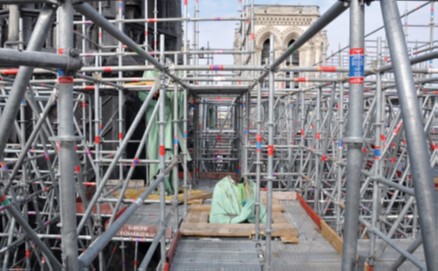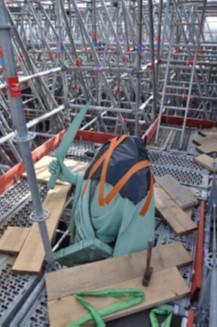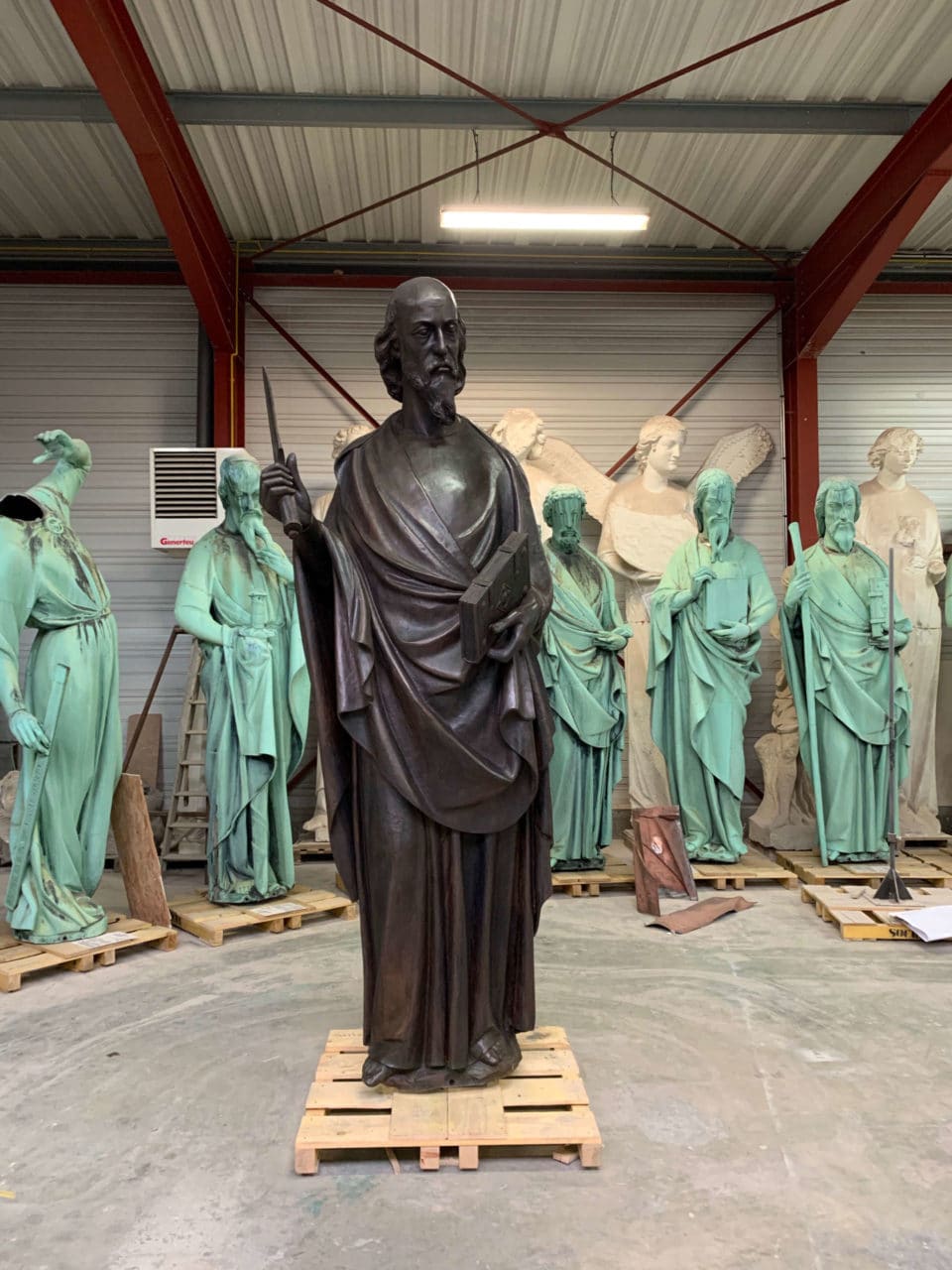Notre-Dame Cathedral Statues were safely and successfully removed from the cathedral’s spire!
April 11, 2019 marked a big occasion: the huge Notre-Dame Cathedral statues that adorn the spire were removed.

The statues consist of a copper sheathing attached to an internal iron structure. These materials and techniques were chosen for their greater lightness and ease of execution. A statue is first made in plaster and cast in iron, then copper leaves are hammered on to the iron cast and assembled by soldering. The whole edifice is supported by an iron structure fixed on a central rod and with the posts by bolted down.
The removal of Notre-Dame Cathedral statues, which have been guarding Paris since 1861, is the symbolic concretization of the commitment to the great works in the coming years.

The history of the spire and its statues
The cathedral’s original spire was built from 1220 to 1230. It was supported by a well-designed system of frames, considered an innovative method at the time. All the spire’s weight rested on four pillars in the transept. The original spire functioned as a bell tower and held significant relics for the cathedral. In March 1606, the large cross atop the spire fell due to strong winds and degradation. The compromised structure was then removed from the cathedral in 1792, because it posed to great a risk to passersby below.
The cathedral remained without a spire for several decades until a restoration effort was started by Jean-Baptiste Antoine, which was taken over by Eugène Viollet-le-Duc in 1857. The new spire was completed in 1861 and included statues of the Twelve Apostles surrounding the spire at its base. Each of the four sections of the roof has a row of three Apostles, standing one behind the other, staggered by height. In front of each group of statuary are smaller statues that symbolize the Four Evangelists: a bull for St. Luke, a lion for St. Mark, an eagle for St. John, and an angel for St. Matthew. Each grouping faces one of the four cardinal directions with all statues looking out over Paris, except for one. St. Thomas, the patron saint of architects, looks toward the spire, almost in contemplation. The face of St. Thomas was modelled off of the spire’s architect, Viollet-le-Duc.
The spire is topped off with a rooster that weighs around 66 lbs. The rooster is considered a symbol of the French people because of the play on words of the Latin gallus meaning Gaul and gallus meaning coq, or rooster. The rooster contains three relics: a small piece of the Crown of Thorns, a relic of St. Denis, and a relic of St. Geneviève, the patron saint of Paris. The piece of the Crown of Thorns was supposedly put into the rooster by Viollet-le-Duc himself in 1860.
Next steps in the statues’ journey
The 16 copper Notre-Dame Cathedral statues will go to a workshop in Périgueux in southwestern France where they will be examined by experts. Two will remain at the workshop to undergo restoration, while the remaining 14 will return to the cathedral while they await their turn. The statues will go in pairs to the workshop for restoration on a rotating schedule.
Restored and unrestored statues will be displayed in Notre-Dame Cathedral’s ambulatory where they can be visited by the public. The statues will stay in the cathedral until the end of the restoration of the spire.
Each statue’s renovation is made possible by the generosity of individual and corporate donors in the U.S. and France who “adopted” the statues. Friends of Notre-Dame de Paris is grateful to these dedicated supporters and looks forward to providing updates on the statues’ journey to restoration.
To find out how you can get involved in the restoration of the cathedral, please visit our website and sign up for our newsletter.
